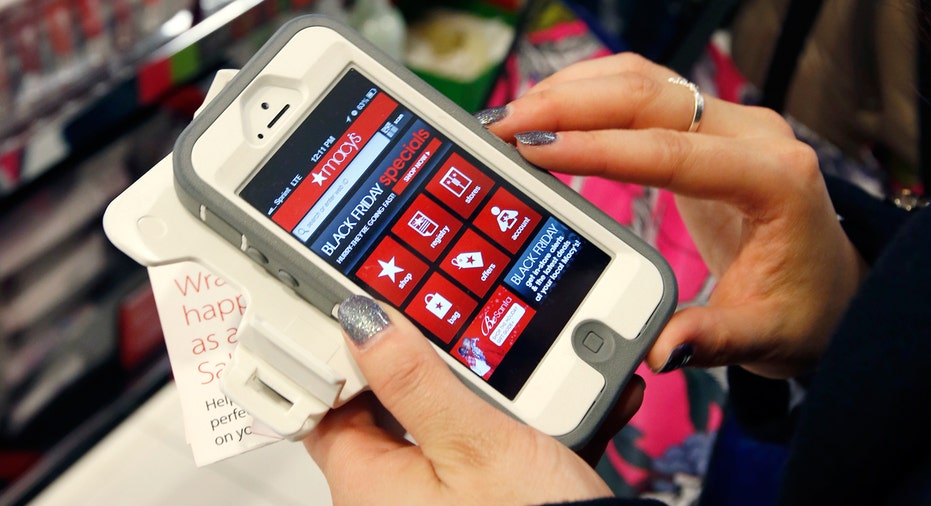Confident Shoppers Still Spending, Just not at Department Stores

Despite this week’s carnage in retail-sector stocks after disappointing same-store sales from a slew of department-store chains including JCPenney (NYSE:JCP), Nordstrom (NYSE:JWN) and Macy’s (NYSE:M), fresh data released Friday show consumers are not only more confident about their economic situations, but also spending at the strongest pace in three months – just not in physical retail stores.
A closely-watched gauge of consumer sentiment from the University of Michigan ticked higher in early May, rising to 97.7 from 97 in April, beating expectations that it would hold steady. What’s more the current conditions index, which measures how confident American’s are feeling about their personal financial situation at the time of the survey, held steady at 112.7 from the month prior, while the expectations index rose to 88.1 from 87.
“More favorable income gains and low inflation meant that consumers held the most favorable real income expectations in a dozen years,” said Richard Curtin, Surveys of Consumers chief economist, who noted that the partisan divide in the data since the November election is still wide though the gap narrowed slightly from three months ago.
And further evidence of the American consumer’s strength was seen last month, as overall retail sales rose 0.4% as spending in non-store retailers jumped 1.4% from the month prior, and 11.9% from the same time in 2016 as e-commerce players like Amazon (NASDAQ:AMZN) continue to dominate in the online shopping space. Meanwhile, spending at department stores dropped 3.7% from April of last year as general merchandise-store spending declined nearly 1%.
An improving housing market led to a jump in spending on home-improvement goods like gardening supplies and building materials. Spending in that category leaped 9.3% from a year ago alongside a 3.8% rise in furniture and home furnishing spend. What’s more, rising wages, which have helped consumers feel more confident about their economic situations, also led to an uptick in spending at food service and drinking establishments, while fuel prices helped drive a more than 12% increase in spending on gas.
Excluding the volatile auto component, which showed the pickup in gas sales and a 4.4% year-over-year rise in car parts and dealers, retail sales rose 0.3% compared to an expected 0.5% pick up.
Meanwhile, the Labor Department’s consumer price index rose 0.2%, matching Wall Street expectations, suggesting the drop in March – the first in 13 months – was a temporary blip. Increases in rent costs, food prices, and gasoline helped boost the index.
The core measure of CPI, which strips out food and energy prices, rose 1.9%, virtually in line with the 2% expectation. April was the second month in a row core consumer inflation rose less than expected, though economists at Barclays view that as a transitory issue pressured by deflation in vehicles and apparel with the effects of a strong dollar and higher energy prices having dissipated.
“We see structural changes in the care retailing sector and competition among department stores as likely weighing on car and apparel prices. On the other hand, we believe that core services inflation remains robust, shelter in particular. We think it will continue to support a gradual improvement in inflation pressures,” they said.
The Federal Reserve, which has been on a path to raising short-term interest rates against an improving macroeconomic backdrop, has set a 2% core inflation goal and reiterated last month it would be closely monitoring the economy’s progress before it raises rates at least twice more before the end of the year.
With a strong labor market that saw a rebound in job creation and a 10-year low in the unemployment rate last month, coupled with strength from the consumer – which accounts for more than 70% of overall GDP growth – Barclays economists see the Fed undeterred by softening core CPI and likely to continue on their path to tighter monetary policy.



















